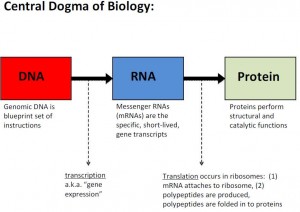One of the issues that was raised in the recent Microbiology of the Built Environment conference in Boulder was sampling, specifically what and how is the material collected for subsequent biological analysis. Industrial hygienists and those tackling questions of exposure have devoted a lot of time to developing methods for how to study the indoor …
In response to Hal Levin’s comment on my previous post: Thank you ISIAQ for the “Vocabulary of the Indoor Air Sciences” I am starting to put together some definitions and background information on the terminology of microbial ecology studies. Please suggest any / all terms that you think would be useful to define and I will …
One reason that it can be difficult to bridge across different fields is just learning the vocabulary and jargon of the field. So happy to have found this: Vocabulary of the Indoor Air Sciences while browsing the web site for ISIAQ – the International Society of Indoor Air Quality and Climate. It even has 43 …
Just discovered this site from Georgia Tech: Built Environment + Public Health Clearinghouse. It has some useful information about schools, courses, training activities and general information relating to what they call “at this critical intersection of health and place.” Some of the resources are pretty minimal but there is still a lot there that I found helpful …
Just discovered this site from the CDC dedicated to information about Helthcare Associated Infections: Healthcare-associated infections | HAI | CDC. It has a great collection of links and resources including links to data, research, prevention methods, and more. Definitely worth checking out if you have any interest in HAIs or hospital associated microbes.
One of the unmet challenges to the Sloan Foundation’s Microbiology of the Built Environment (MoBE) program is the sharing of the results of the Foundation-funded studies as well as other studies of the indoor and built environment microbiome. At the American Society for Microbiology’s annual conference in Boston last week, I was impressed by Pieter …
Metadata collected for MoBE studies can be organized and submitted to QIIME utilizing the MIxS-BE metadata standard. Templates for data submission and a Metadata Standard Submission Guide (see below) will be posted to microbe.net Resources. Please contact Lynn Schriml (lschriml@som.umaryland.edu) for questions regarding mapping your data to the MIxS metadata standard or Gail Ackermann (gail.ackermann@colorado.edu) at QIIME …
Animal shelters provide an essential and beneficial social service, caring for an estimated 9 million pets each year in the United States. Many animals entering a shelter are highly stressed and lack the benefits of standard veterinary care, including vaccinations. Moreover animal shelters are an intensive housing situation that amplifies the transmission of infectious diseases …
Jordan Peccia has posted the slides from his tutorial, Molecular methods for bioaerosol analysis on Slideshare. If you would like to get a quick overview of molecular-biology based methods, this is a painless, accessible way to do it. You are encouraged to post your comments and questions after you review the slideshow. We hope to …
I thought this might be of interest to some of the “microbiology of the Built Environment” crowd. I gave a talk at the UC Davis Bodega Bay Marine Lab as part of the Workshop on Applied Phylogenetics on the “Evolution of DNA Sequencing”. I posted the slides to Slideshare and am embedding them here. I …
